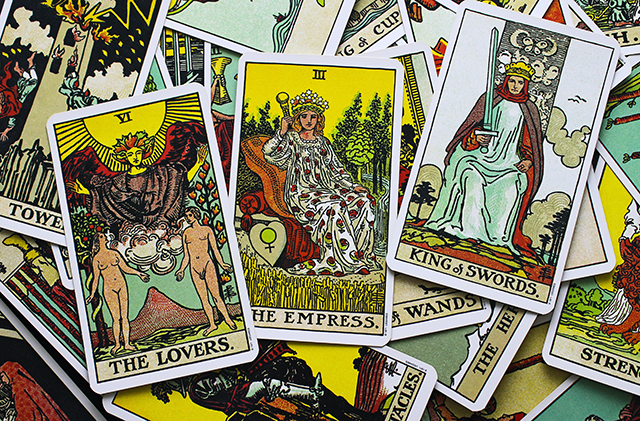
[dropcap]T[/dropcap]arot cards have been around since the 15th century but have recently gained popularity amongst millennials.
From TikTok tarot readings to Instagram live streams, tarot cards have gone mainstream. Tarot cards are a great tool for making sense of our ever-changing lives and for gaining perspective on the present moment. They can give us the opportunity to explore questions we may hold within.
You may ask a question such as “what will the month of November look like for me?”, you then select three cards to answer that question. You will interpret each card in relation to the question, each one working as a tool for introspection.
Tarot cards are used to give you guidance on matters such as love, money, goals and even your general life path. “Through the years, the cards have helped me understand myself and my surroundings, while also helping others on their spiritual journey,” Yasmin Kelly, a final year journalism student in DCU and a keen tarot card user said.
Learning to read tarot cards can be daunting at first, as many people feel they have to memorise all 78 cards, but this is not the case.
After purchasing a deck, the best thing to do is familiarise yourself with it. You can do this by pulling one card a day and thinking about the meaning of that card.
Doing this will help you understand the cards on a deeper level.
“A word of advice for anyone looking to start a spiritual path is; be patient. It’s definitely not something that happens overnight. It takes a lot of time, self-care and self-awareness. However, when something finally clicks with you it is such an amazing feeling,” Kelly said.
The energy of the space in which you practice is very important too. When reading your cards, you are in a vulnerable state and therefore it is important that you are doing so in a calm environment.
Lighting candles, burning sage and setting an intention can all help to make your environment feel like a safe space to read your cards and open up fully. An intention for an environment could be something like “I do not allow non-loving energies.”
The easiest way to begin practising tarot is with the three-card spread, which involves you asking a question and then pulling three cards.
You begin by shuffling the deck. You do this until your intuition tells you to stop. You then cut the deck into three piles, and you or the person you are reading for selects one pile.
This is when you remove three cards from the deck and allow them to answer your question.
One card represents the past, one the present and one the future or you can interpret it that one represents the mind, one the body and one the soul.
A three-card spread can give you the insights you need in relation to the question you asked.
Every reader will interpret the cards differently, therefore having a tarot study buddy could be an interesting way to practice reading the cards.
Jayde Maher
Image credit: Manik Roy on Unsplash


